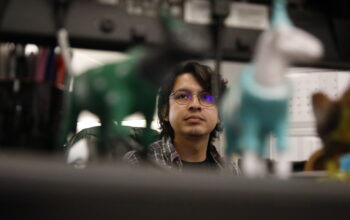Natalie Houalla
While it might seem like there are more male faculty walking around campus, that simply isn’t true.
At Pierce College, the faculty consists of mostly females.
The percent of female faculty and female students is about the same. The faculty has 53.5 percent female and the students are 57 percent female.
Kathy Daruty, professor of philosophy and business feels that women are underrepresented in society but have come a long way in the past 30 years or so.
“We have seen a lot of handiness in hiring people,” said Daruty. “I have been working here for 27 years and we have come a long way. As far as leadership goes, women have been just as important as men.
Charts show, however, that larger universities still have more males teaching, yet the same amount of female students. There are about 60 percent more males teaching than females.
“Women were always expected to stay at home and raise the kids and take care of their families,” said Daruty.
“But times have changed. Women are coming up in the world.”
Female students do get more degrees than male students, but when it comes down to medical degrees, males receive more degrees than females do. If more females are in the world and more females are getting degrees, then we should see the percent of faculty increase as well.
Across the country, the percentage of female faculty has increased about 30 percent. Yet, some tech schools and engineering schools only show female faculty at about 10 percent.
“Both my sisters are engineers,” said Violet Amrikhas, senior accountant and supervisor of the Business Office.
where they are, but they did it. Anyone can if they care or are passionate.”
It is clear from the very small numbers of women faculty, at all ranks, that colleges everywhere still has a way to go in providing an inviting environment for women faculty.
The overall climate in which many women faculty find themselves is still one of isolation, and a sense of needing to do better than their male colleagues in order to survive and succeed.
However, there is also a sense that much progress has been made in the last 15 or 20 years, both in terms of numbers of women faculty and in improving the atmosphere.
Despite this progress, the academic gender gap persists in some colleges academic departments.
Many departments have had exemplary records in female faculty hiring, while others have lagged, such as science and mathematic departments.
The rate of hiring of women faculty varies widely by field. In some fields such as the humanities, schools are hiring at a rate at or above the number of women in the available pool.
In traditionally underrepresented fields such as computer science and engineering, colleges are hiring at a much lower rate.



